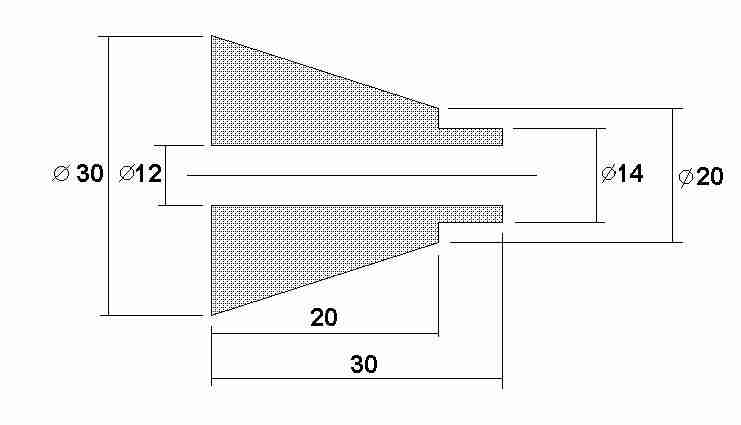| REMOVE THE ALTERNATOR
Here I can only talk about the
Bosch and Saprisa alternators, on the newer models I
have not worked yet. First remove the 8mm Allan head
screw of the rotor. The screw doesn't have to be
tightened too much, as the cone fixes the rotor on the
crankshaft. To remove the rotor you need a small tool
with which to squeeze the rotor of the crankshaft. You
can buy this at your local dealer, but it is very
simple to make. Go to builders square next door and
look for a hard metal pin 6x55mm. Completely thrifty
people can also shorten an old 6mm screw to
corresponding length. This little thing you put in the
screw hole, take an old 8mm bolt, and screw it in.
Suddenly the rotor will come off.
|
| REMOVE THE GEAR BOX
The construction of the Guzzi
frame is, in regard to the gearbox removal, a
completely stupid design. When you want to work on the
clutch or the gearbox, you have to take apart the
whole motorcycle. It is at least, even with experience
a 1,5 hour job. Usually you remove the whole frame
from the engine. At assembly it takes a lot of time to
fit the lower frame into the upper frame again. Here
you can spare some work and time, if you take out not
only the rear wheel but also the front wheel. Keep the
long engine bolt under the alternator in place, only
loosen it, and turn the frame around this front screw
and support it with a piece of wood facing the engine
block in the area of the distributor. Now you can
reach the gearbox under the frame.
|
| CLUTCH REMOVAL AND INSTALLATION
Without the special tool this is
not that easy. Try to hold the flywheel with a stabile
screwdriver and loosen one of the screws. Done this,
you've won. Now take an old screw, screw it in and
connect this with any kind of tool or metal with one
of the struts from the engine housing.
Behind it the clutch you can
find the clutch plates, the pressure ring and the
ground ring, behind which the springs are. But STOP,
before simply ripping everything out, have a close
look onto the ground plate. There is a little punch
hole on one tooth. I would recommend to make punch
holes into the clutch on each side of this one, so
that you are able to mount it in the right position.
If you were too fast, there is an explanation, which
is too long to describe, and when I did that once, I
did it twice and had the feeling it wasn't right. If
you have done it wrong, you can feel riding the first
yards, the clutch doesn't disconnect properly. That's
because the springs are not working in axial
direction.
Also the crankshaft has a mark,
which determines the position of the clutch. Also here
I have immortalized the painted mark with a punch
hole. You discover the screws of the clutch, which you
can also loosen with the method described above.
The installation happens in
reverse sequence, whereby the problem is the alignment
of the teeth of the clutch and the distance plate on
the one hand and center this whole package to the
crankshaft on the other. The easiest is, if you have a
spare or used gear from the transmission, otherwise
you have to detach the one from the gear box. For even
more convenience I have got another tool made on a
lathe, a little cone sketched below (sorry, sizes in
mm again). Furthermore you need from a very well
stocked hardware store a M12x100x1.5 screw. Head and
coating doesn't matter.

Screw the gear with the cone into the crankshaft, put
the springs in (to glue them for a moment you can use
a tiny bit of copper paste), put the ground plate in
place and feel with a finger, if all springs are in
their holes. Then put the first clutch plate in, the
distance plate and the second clutch plate (both
clutch plates with the collar to the rear), attach the
starter circle with two springs to the clutch housing.
Tighten them slowly and check if the distance plate
moves in its place. If you have assured this, you can
tighten all others as well, using the method above to
tighten all except one. The last one you can tighten
with the help of the screwdriver. Take out the gear
and the bolt. Don't forget the little pusher, which
belongs to the bottom of the clutch onto the pressure
plate.
If you don't have a cone, you
are depending on your best guess and have to use a
light to check through the holes, if everything
aligns. But that will never be as accurate and worst
case will be, that you can't mount the gearbox.
If you have done it right, you
can push the gearbox more or less easily into the
clutch.
|